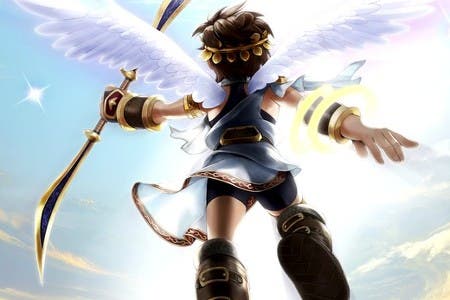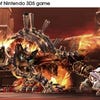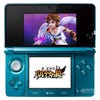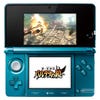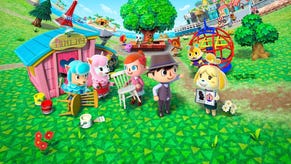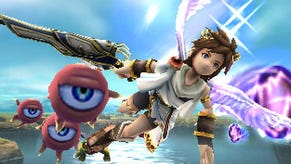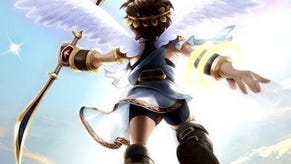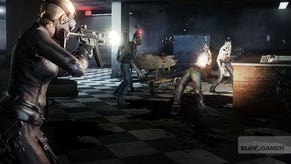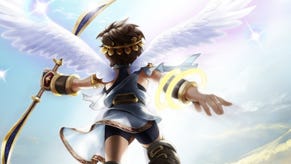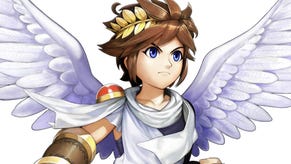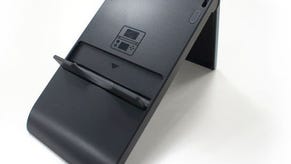Kid Icarus: Uprising Review
Close to the sun.
Teasing a character out of 21 years of retirement offers a rare opportunity for the video game designer. Two decades is an epoch-and-a-half in game development terms - and so Masahiro Sakurai has been able to approach this, the third game in the Kid Icarus series, with none of the baggage of expectations that most of Nintendo's icons labour under.
Sakurai has always been a risk-taker within Nintendo. He developed the prototype for Super Smash Bros. in secret, knowing his employers would likely baulk at the idea of their beloved mascots tearing one another limb from limb. So too with Kid Icarus: Uprising we see a designer straining to broaden the definition of a Nintendo game.
This is a lithe, sharp, focused game that rewards skill, punishes stupidity and prizes high scores in a way that none of the publisher's output has dared to for the past five years. Kid Icarus is a contender's game - and, just maybe, a sign that the publisher has flown a little too close to the mainstream sun in recent times, and is ready to tumble back into more complex waters.
But such business considerations couldn't be further from your mind as you swoop and soar over verdant landscapes, firing orbs into the face of a mile-high Medusa. It's a game with many strings to its bow, but at its core Kid Icarus: Uprising is an on-rails shooter in the vein of Panzer Dragoon, Rez or Sin and Punishment.
Pit, the angelic protagonist, is unable to fly without the help of Palutena, whose magic propels him through the first half of each of the game's stages. Her pixie dust only lasts for five minutes, however, at which point Pit takes the battle to the ground for the second half of the level: an off-rails section that gives you free control as you rush about dungeons in search of loot and the stage boss.
Movement is handled with the analogue slider and aiming with the stylus on the touch-screen. You fire your equipped weapon with a squeeze of the L-bumper, making holding the 3DS somewhat awkward as you simultaneously grasp, balance and thumb-tweak with your left hand. The on-foot sections make similarly numerous control demands as you sidestep and roll with swipes of the stylus, like a jabbing, sweeping symphony conductor. It's this section of the game that demands the most of its player; mastery is measured in hours, not minutes. (The game also supports the Circle Pad Pro add-on for twin-stick control, which is probably the only way for left-handed players to get to grips with it.)
The environment designs are stunning, the 3D effect picking out the fine detail of Roman cities nestled within patchwork-quilt fields. Up close, enemy models are intricate, animations are expressive and dungeons are filled with happy secrets and visual jokes. Nevertheless, when set against high points in the genre, Kid Icarus: Uprising falters. Nintendo fails to keep up with the inventive moment-by-moment design seen in Treasure's Sin and Punishment 2, with enemies fast becoming repetitive and some clunky jumping and driving sections interrupting the flow.
But Sakurai's brilliance has always been found in the systems that surround his core game mechanics - and it's here that Kid Icarus: Uprising turns from a good game into a great one.
The game's currency is hearts, which are dropped in confetti clusters by every downed enemy, restoring health as they are auto-collected as well as adding to a grand numerical total for the level. These hearts can be spent in numerous ways, principally on purchasing new weapons. The game is bursting at the seams with Borderlands-esque weapons, from divine, diamond-encrusted bows to glowing rifles and giant granite cleavers. Each weapon has both a projectile and a melee attack (which trigger depending on proximity to the target) and many weapons also come with special buffs and debuffs to broaden your range of tactical options.
Any two weapons can be combined in a forge to create a new weapon that will retain most, if not all of the buffs - and crafting new offensive options from old ones brings a hugely engaging meta-game into play. Each weapon is assigned a numerical score to indicate its general quality, and as you plunge deeper into levels, so the chances of happening upon more powerful weapons in secret chests or as rare drops increases.
Hearts can also be spent on increasing the difficulty of the game. It's an ingenious system that has you essentially gambling on the difficulty of each stage. Pay more hearts and you can up the toughness of your enemies notch by notch, decreasing the chance of survival while increasing the potential winnings. It is a wonderful system that other games would do well to copy. Certain levels contain Intensity Gates, locked doors that will only open if the difficulty is above a certain threshold. Behind these doors lurk powerful enemies and rare weapons. This network of systems heightens the replay value of the game to an unprecedented level.
Yet more depth and customisation is introduced via Powers, collectible augments that can be slotted into your play-style. These add-ons offer additional abilities that can be equipped and triggered by tapping the touchscreen to, for example, replenish health or auto-target an enemy's weak spot for a few seconds. Powers are represented by Tetris-style blocks and must be slotted into a grid, a little like fitting items into your Resident Evil briefcase. Run out of room and you'll have to leave certain Powers on the shelf - Sakurai turning the job of equipping abilities into its own mini-game of sorts.
One of the best reasons to acquire new weapons is the opportunity to take your loot online. Two multiplayer modes provide a significant draw for showboating. Light vs. Dark is a twist on Team Deathmatch where each team is joined by Light Pit or Dark Pit respectively for the final few moments of the match. As a balancing factor, the greater the quality of your chosen weapon, the greater the hit to your team's score when you're killed. It's a perfect, elegant solution that demands players match the quality of their loot with the quality of their skills. The additional mode is a straight up Free-For-All, with an enviable heart payout for the player with the highest score at the end of the match.
The array of supplemental features goes on and on. Weapons can be turned into gems, which will be traded with other players while out and about via StreetPass; 120 'achievements' unlock new weapons and powers as they are earned; collectible Idols can be won by launching eggs into the air. The sheer amount of content to earn and enjoy dizzies the mind.
Kid Icarus: Uprising is a strong, pretty game turned into an essential one by way of its surrounding infrastructure. Its weave of systems hauls you back in to replay stages time after time; the sense of progress and acquisition is a powerful, irresistible loop. Most significantly, it reveals a Nintendo we haven't seen for some time, eager to innovate in ways that will excite its hardcore fans, focusing on competition, struggle and mastery. Reaching for the sky.
